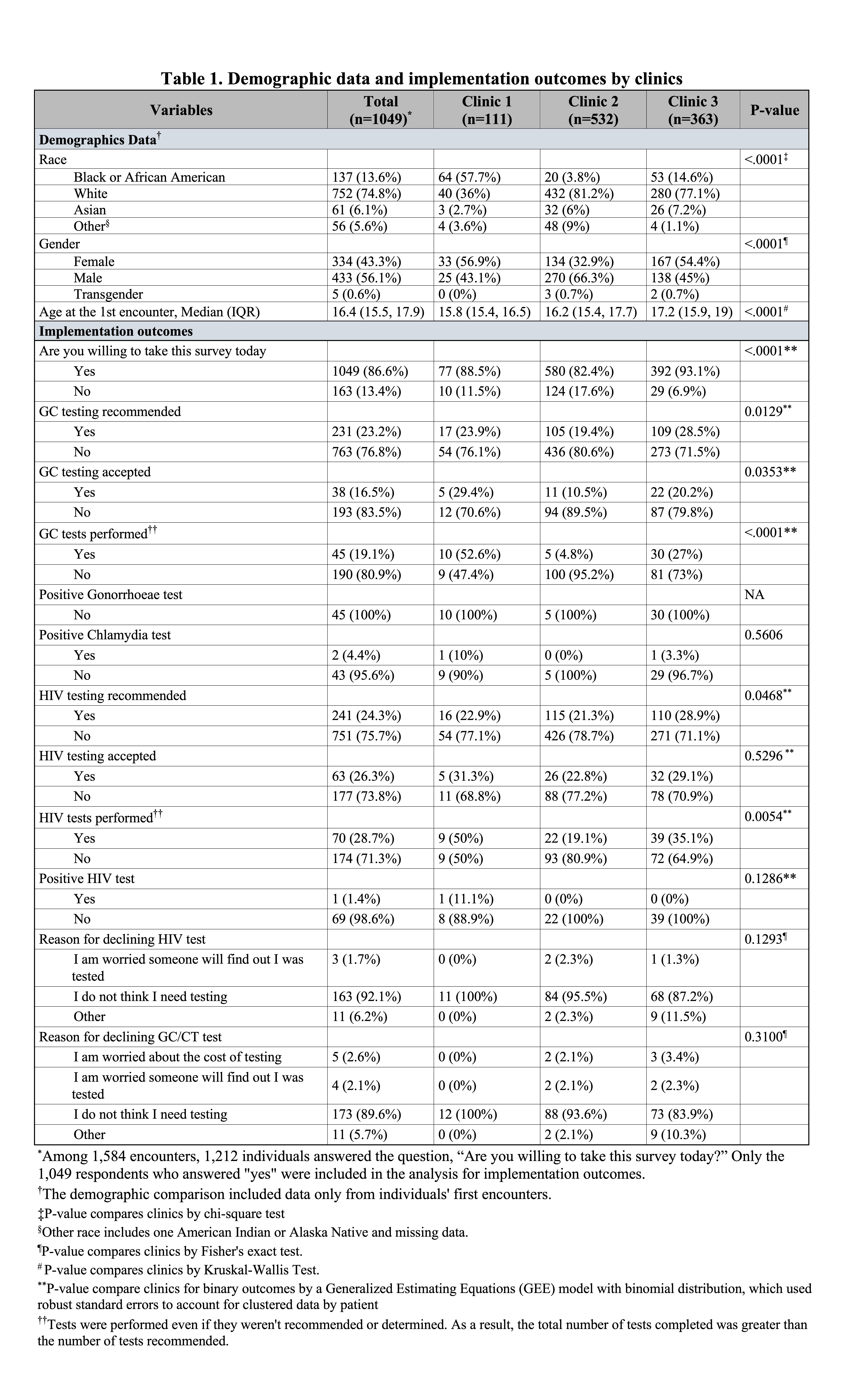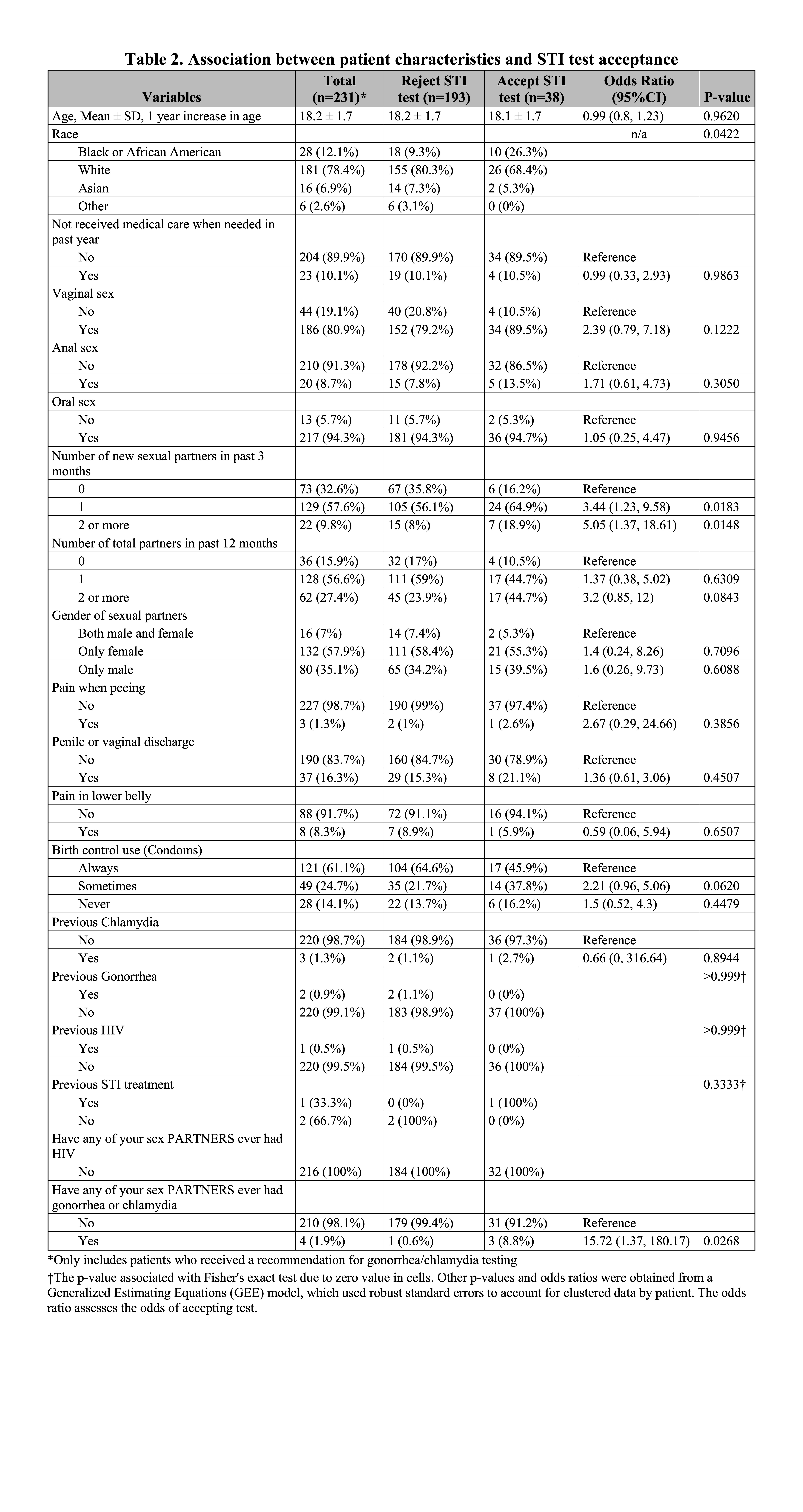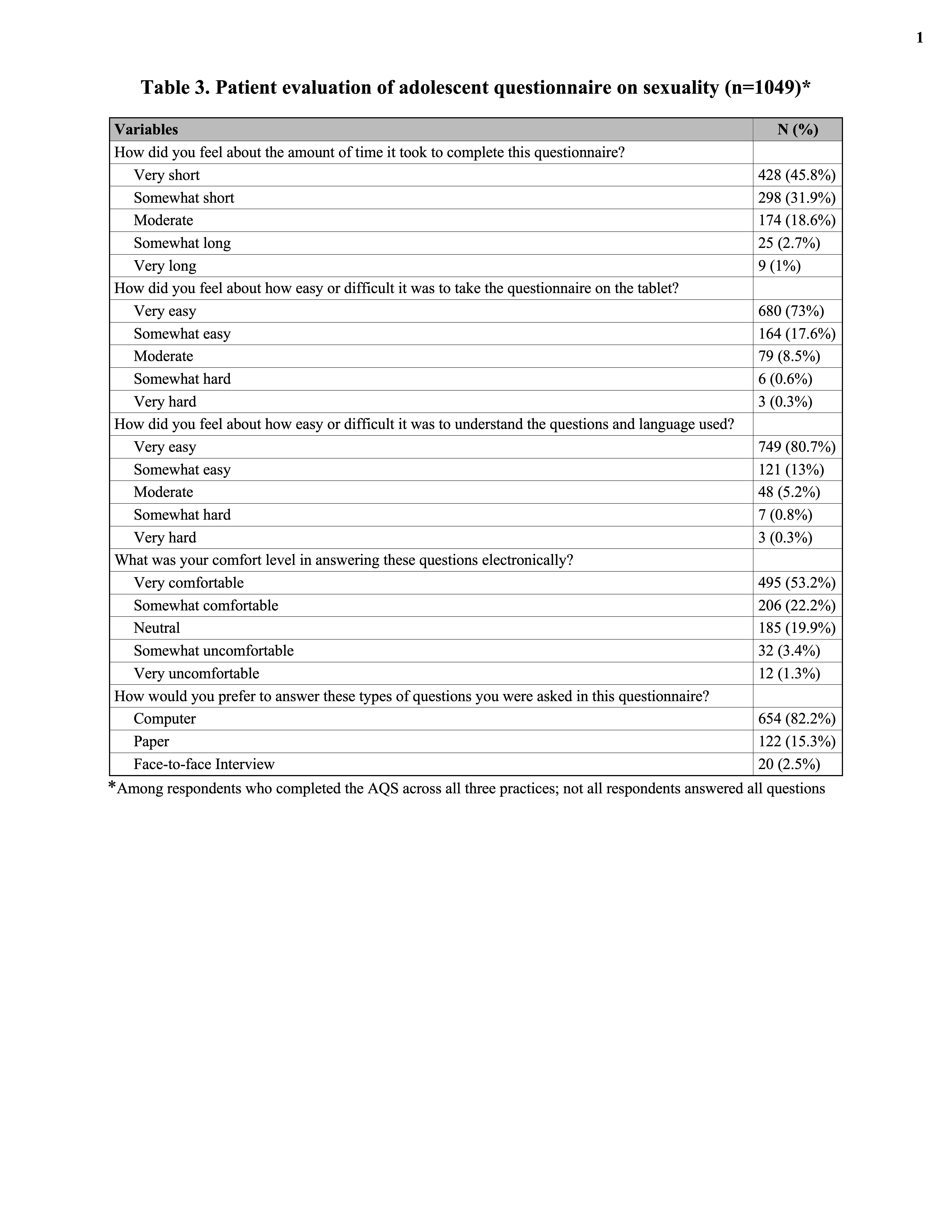General Pediatrics 2
Session: General Pediatrics 2
712 - Implementation and Evaluation of an Electronic STI Screening Tool in Pediatric Primary Care: Insights from a Multiclinic Study
Friday, April 25, 2025
5:30pm - 7:45pm HST
Publication Number: 712.5235
Fahd A. Ahmad, Washington University in St. Louis School of Medicine, St. Louis, MO, United States; Viani Dickey, Washington University in St. Louis School of Medicine, St. Louis, MO, United States; JINLI WANG, Washington University in St. Louis School of Medicine, chesterfield, MO, United States; Virginia Mckay, Washington University in St. Louis, St. Louis, MO, United States
.jpg)
Fahd A. Ahmad, MD, MSCI
Associate Professor of Pediatrics
Washington University in St. Louis School of Medicine
St. Louis, Missouri, United States
Presenting Author(s)
Background: Adolescents bear a disproportionate burden of sexually transmitted infections (STIs), accounting for nearly half of all new cases in the U.S. Despite recommendations for routine STI screening in at-risk adolescents, primary care settings continue to face barriers in integrating this into routine care. We previously implemented the Adolescent Questionnaire on Sexuality (AQS), an electronic risk-based STI screening tool in a pediatric emergency department (ED), significantly improving STI screening. Formative work provided insights into contextual barriers, usability, and workflow integration for adapting the AQS for pediatric primary care.
Objective: To evaluate the implementation of the AQS in pediatric primary care clinics, examining engagement rates, testing uptake, and testing outcomes.
Design/Methods: This work was conducted in three pediatric primary care clinics in St. Louis, MO metropolitan area. Adolescents aged 15-21 at annual preventive visits were asked to complete the AQS on a tablet. The AQS generated STI and HIV testing recommendations and integrated them into the electronic health record in real-time. Patient’s demographics data were compared across clinics using chi-square test, Fisher's exact test or Kruskal-Wallis Test. A Generalized Estimating Equations (GEE) model with robust standard error was used to compare the implementation outcomes across clinics and test the association between patient level characteristics with STI/HIV test acceptance.
Results: Among the 1584 encounters from 1,006 eligible patients, 86.6% agreed to complete the AQS, with significant clinic variability (Table 1). STI testing acceptance varied across clinics, ranging from 10.5% to 29.4% (p = 0.035). Factors associated with increased likelihood of accepting STI testing included being Black or African American, having two or more new sexual partners in the past 3 months, and having a sexual partner with a history of gonorrhea or chlamydia (Table 2). HIV testing acceptance was significantly associated with older age (OR = 1.21 per year, p = 0.0382) and having multiple sexual partners (OR = 3.62, p = 0.0261). Patient feedback indicated high ease of use, with 73% finding the questionnaire “very easy” to use and 82.2% preferring electronic formats for this topic (Table 3).
Conclusion(s): The AQS demonstrated high engagement in primary care settings. However, variability in test acceptance highlights the need for tailored interventions to improve testing uptake. Future research should focus on expanding the implementation to other practices and integrating additional risk-based health assessments.
Table 1. Demographic data and implementation outcomes by clinics

Table 2. Association between patient characteristics and STI test acceptance

Table 3. Patient evaluation of adolescent questionnaire on sexuality (n=1049)*



